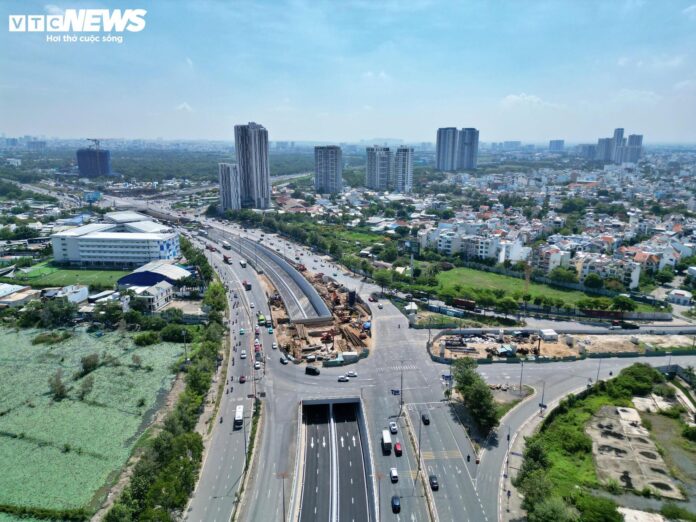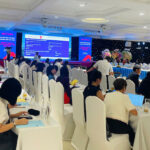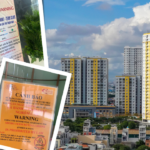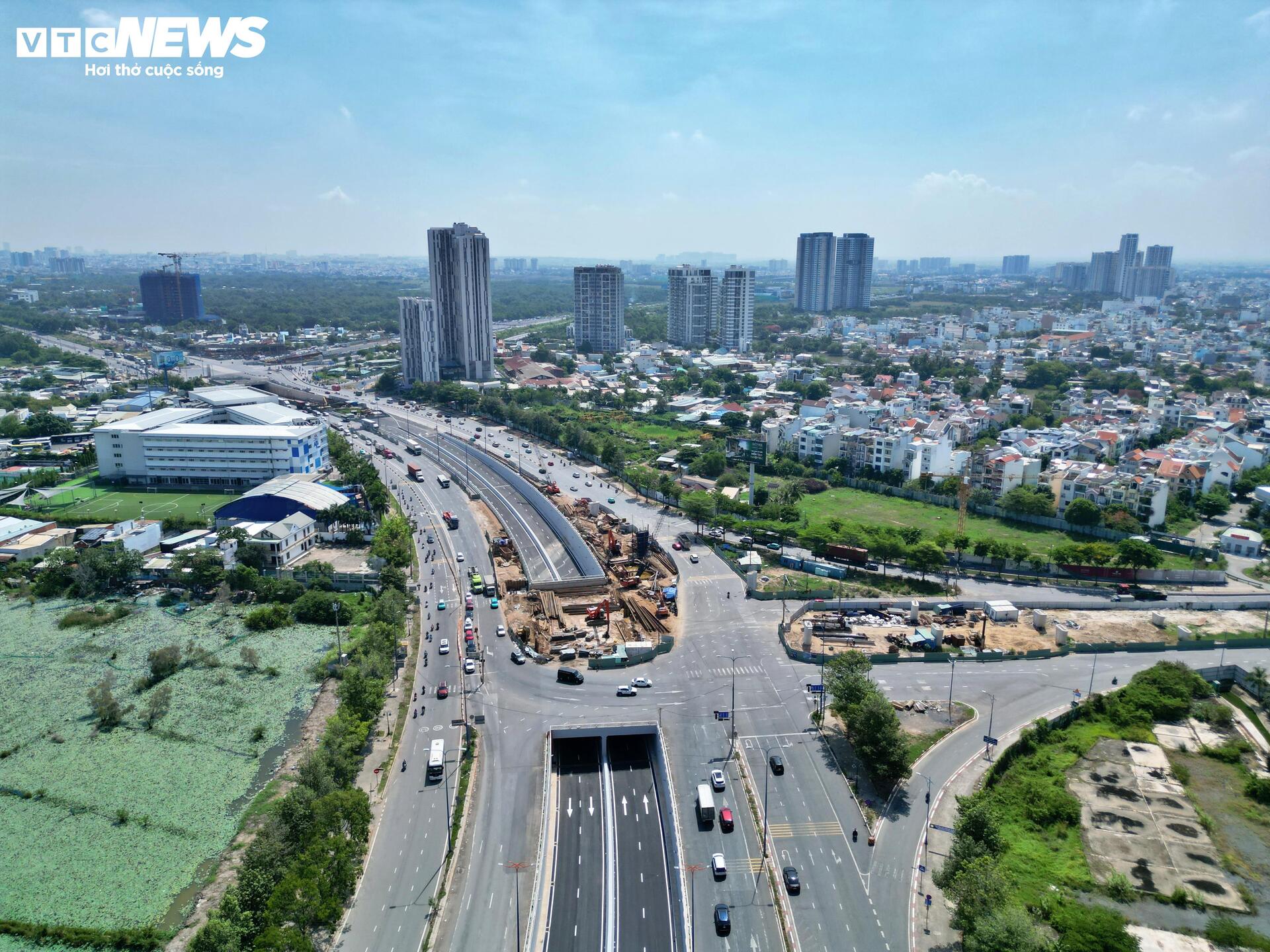
As of May 16th, VTC News reporters observed from a bird’s-eye view that the HC1 underpass at An Phu intersection in Thu Duc City, Ho Chi Minh City, has substantially completed its primary construction. The project is now in its final refinement phase, poised for timely operational deployment.
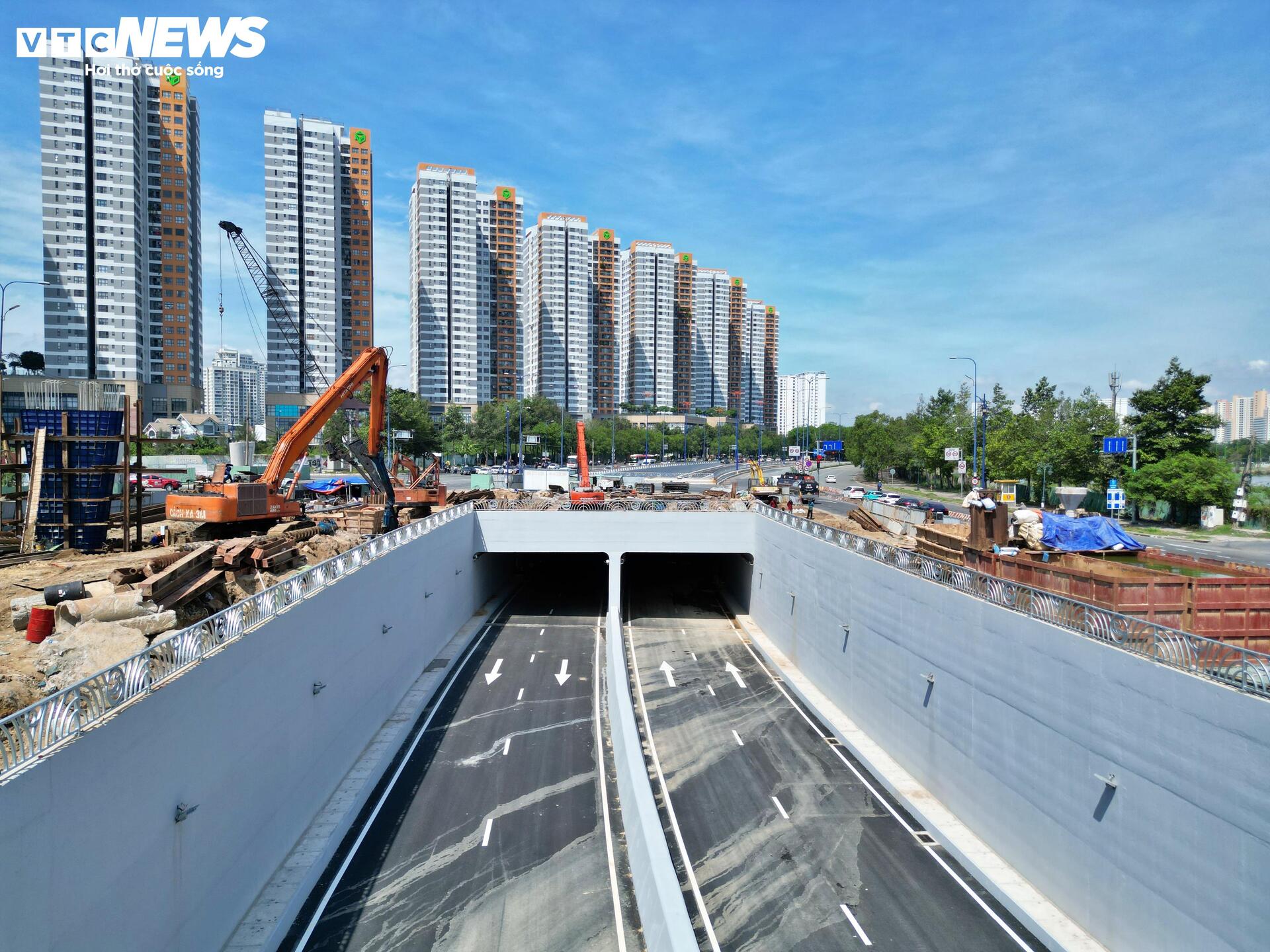
The HC1 underpass at An Phu intersection is the first completed component of the broader An Phu transportation hub project. It serves a pivotal role in interconnecting traffic flows, alleviating congestion, and enhancing operational capacity at Ho Chi Minh City’s eastern gateway.
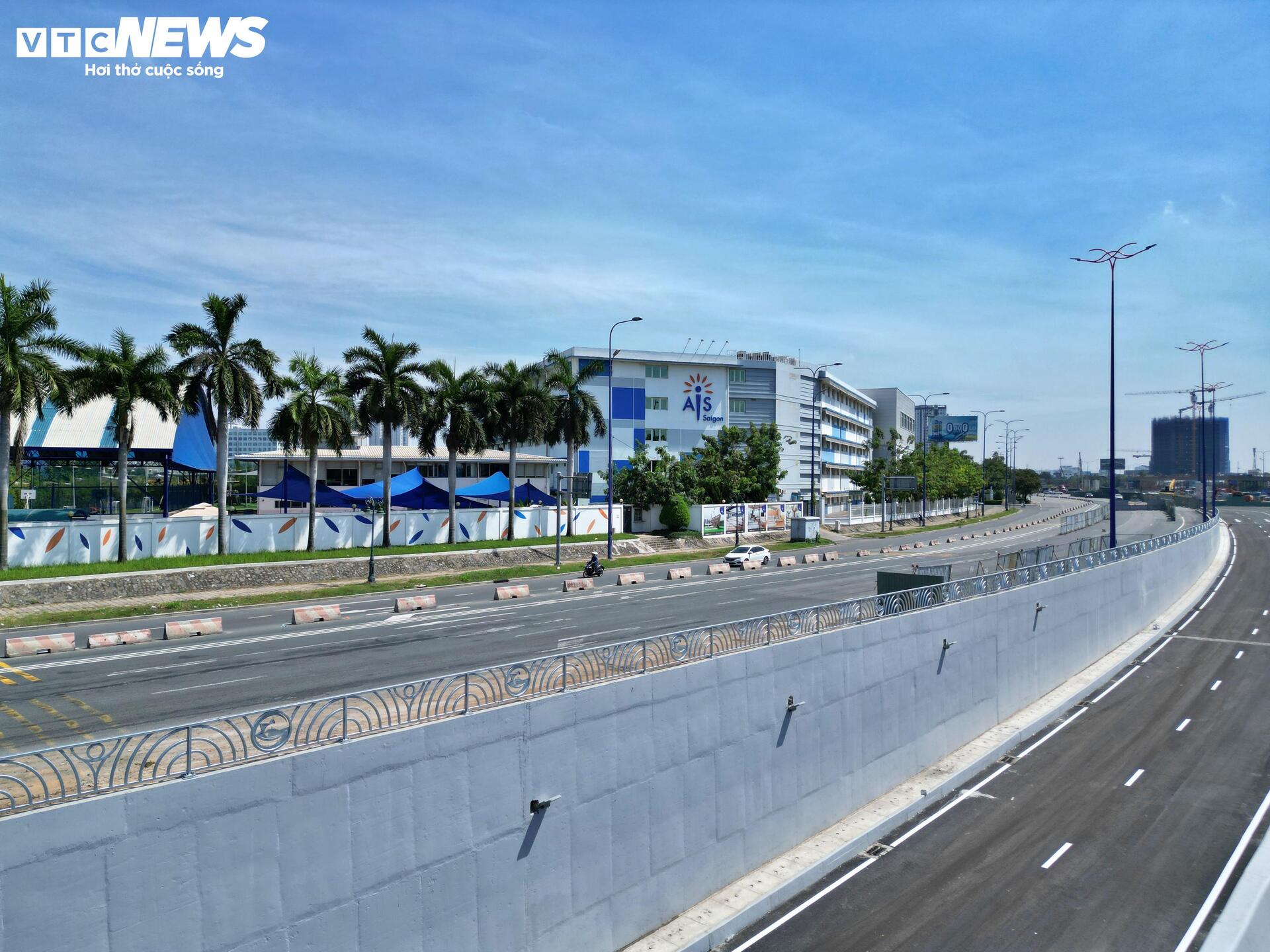
Observations indicate that the exterior of the HC1 underpass is now fully equipped with a railing system, enhancing traffic safety.
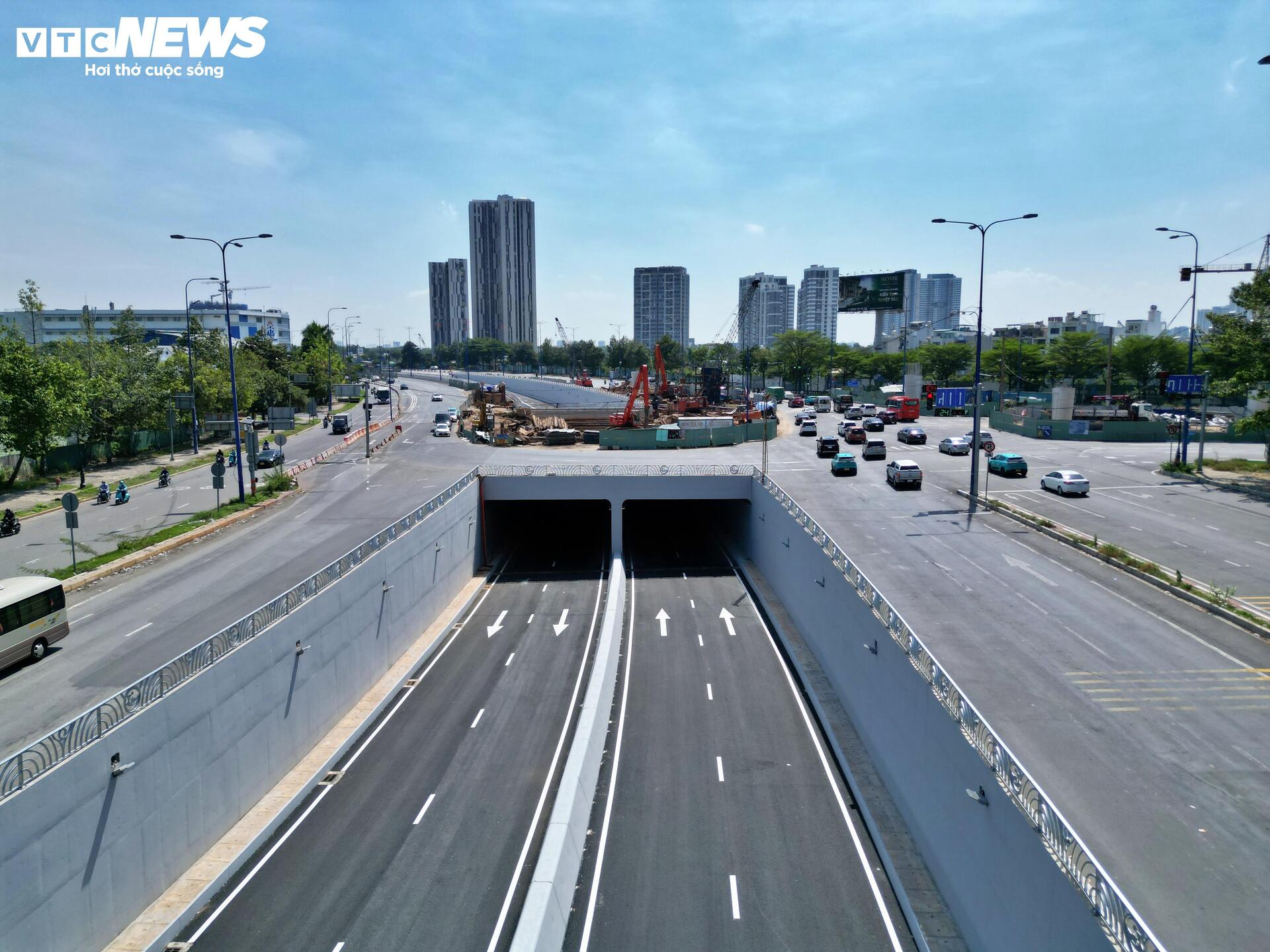
Within the underpass, the road surface has been meticulously asphalted to ensure smoothness and compliance with technical standards, ready for vehicular traffic.
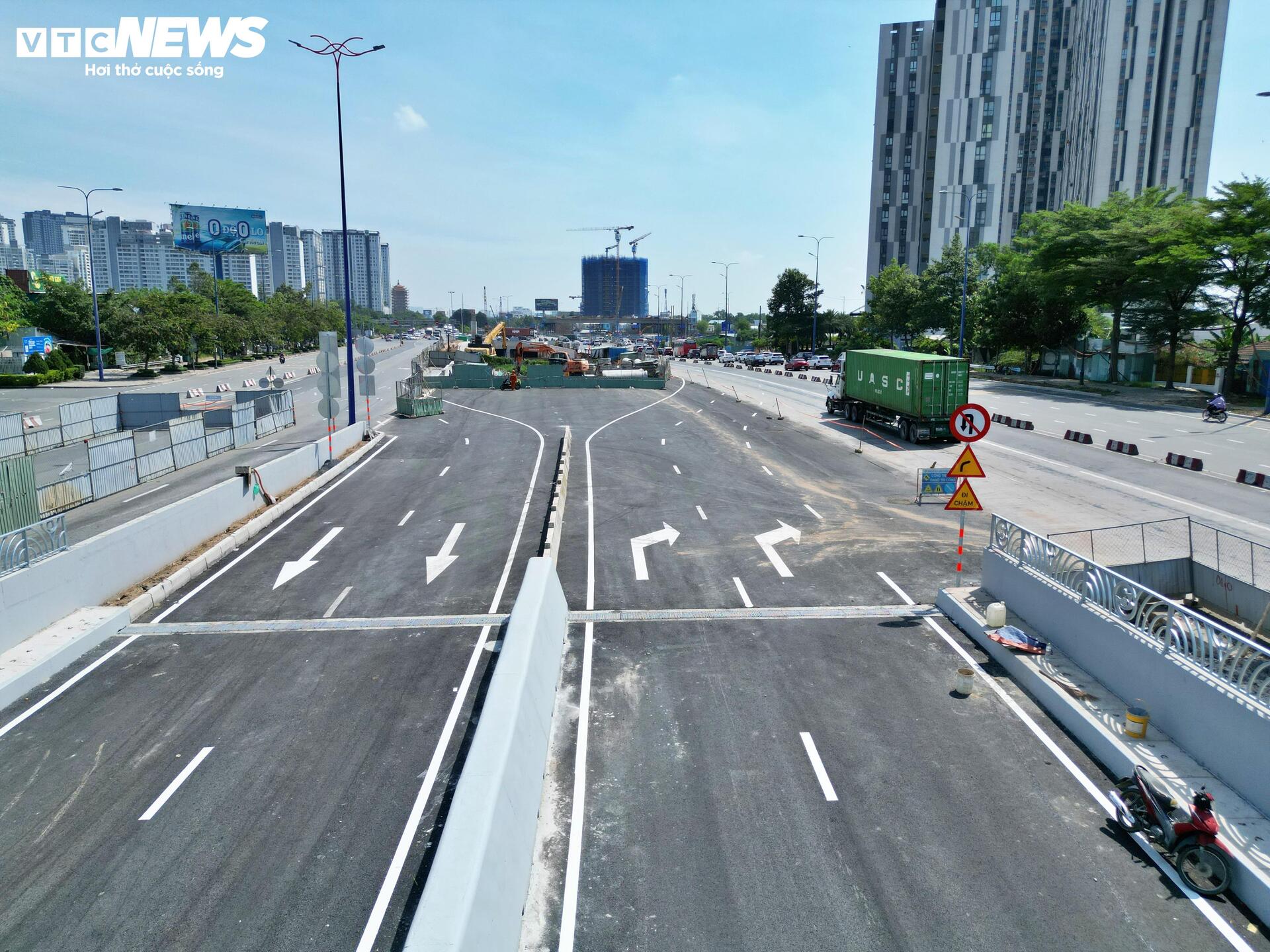
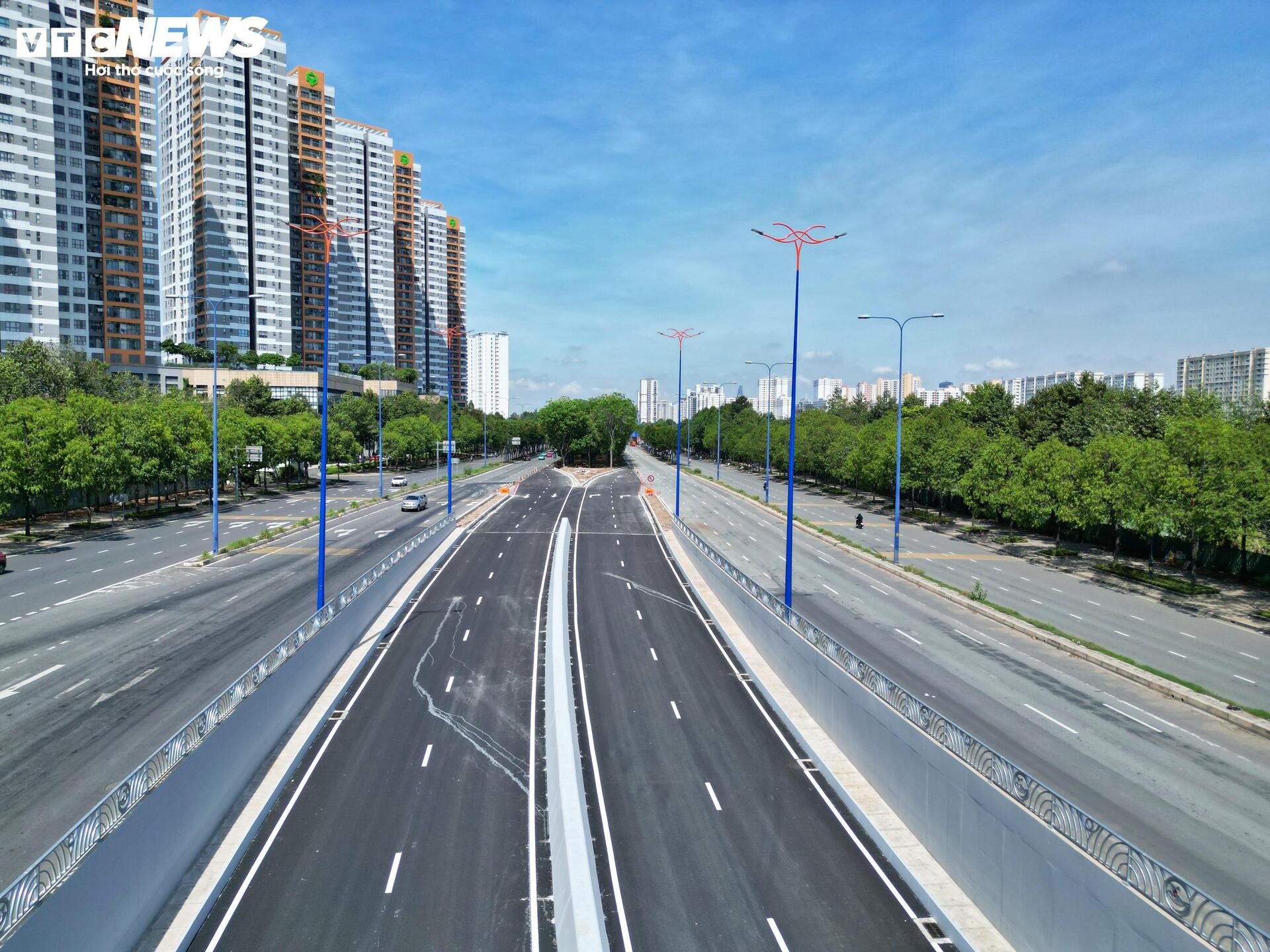
Traffic signs are installed at both ends of the underpass, and lanes are clearly marked with reflective paint for optimal visibility during day and night.
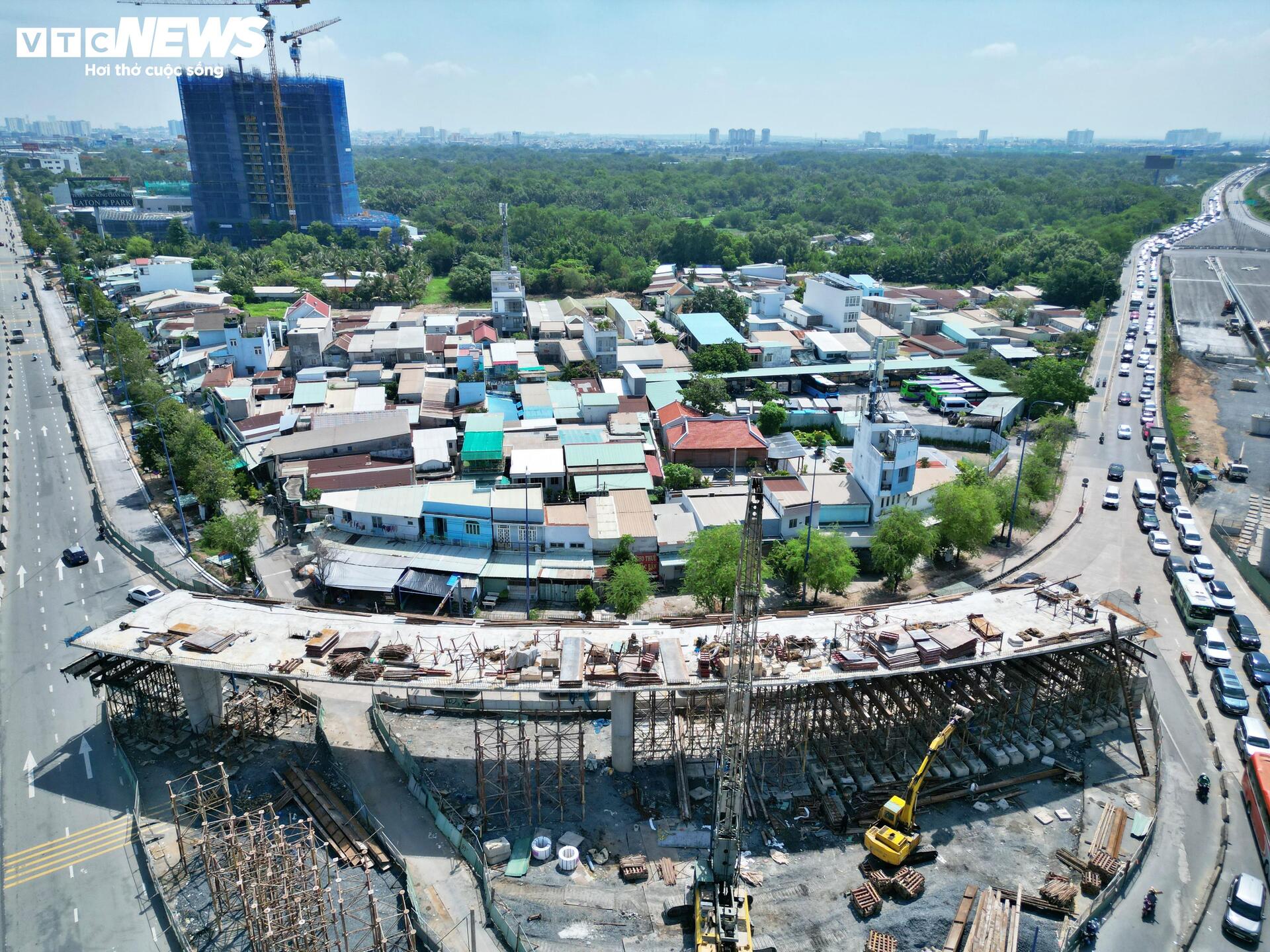
The N2 bridge, which facilitates right turns from the Ho Chi Minh City – Long Thanh – Dau Giay Expressway to Mai Chi Tho Street, is taking shape.

The intersection of the HC1 underpass and Mai Chi Tho Street is now largely unobstructed, facilitating connectivity and traffic organization in the upcoming phase.
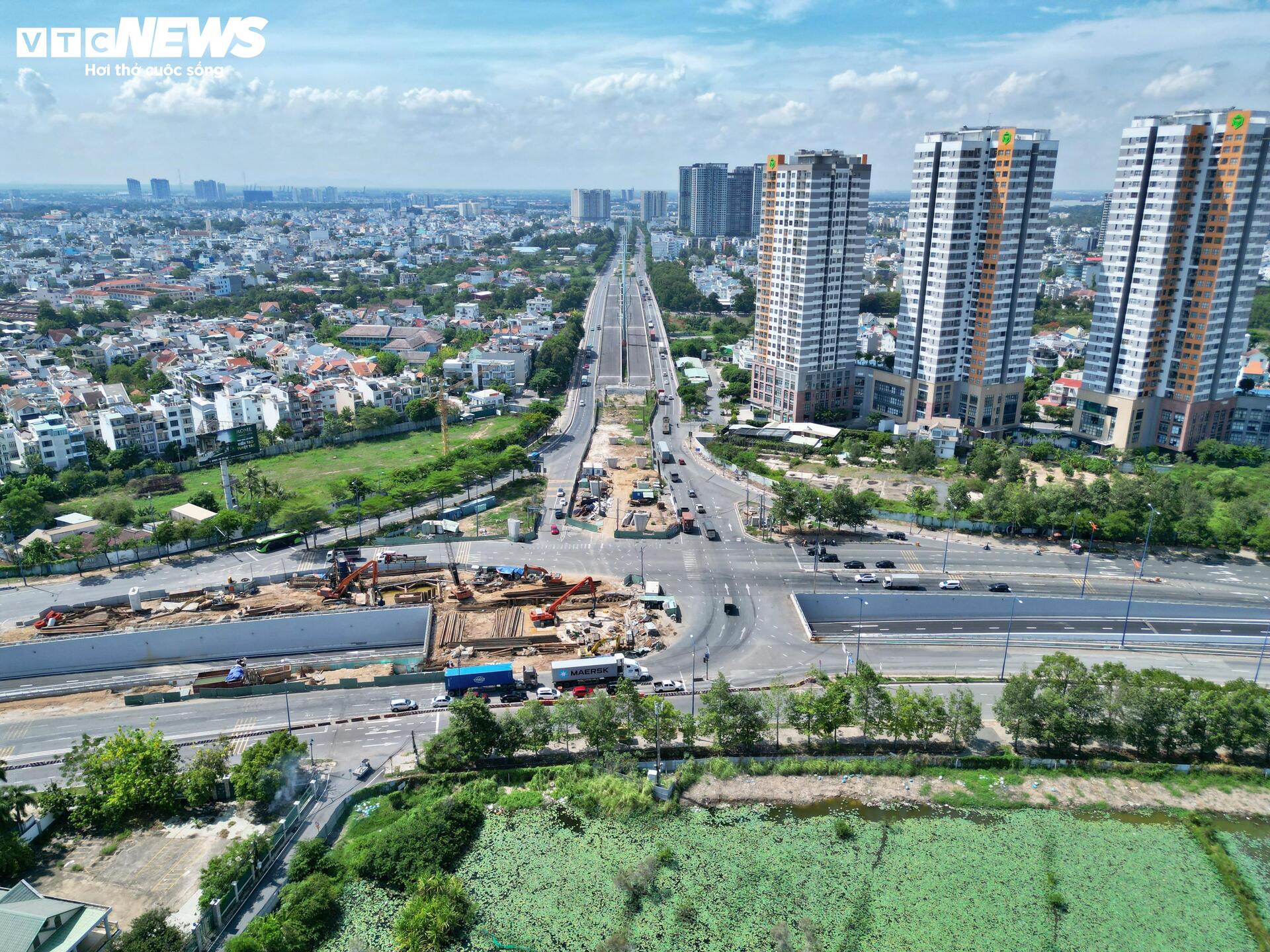
Previously, representatives from the Ho Chi Minh City Transport Works Construction Investment Management Authority (TCIO) shared that despite substantial completion of key components, including the underpass structure, lighting system, and traffic signs, the HC1 underpass could not open to traffic due to the unfinished pumping station.
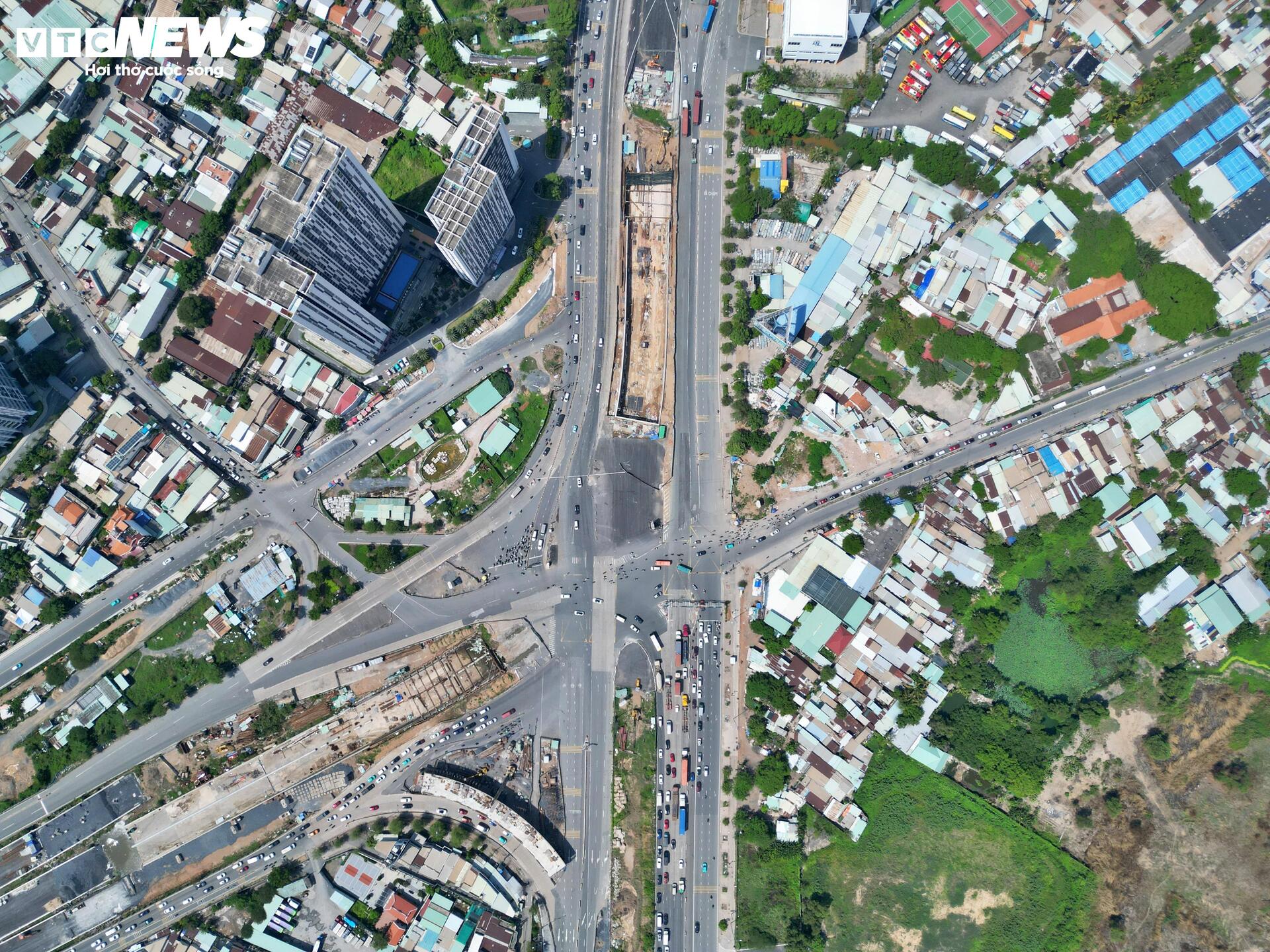
The delay was attributed to complex geological conditions and groundwater issues, which necessitated unforeseen technical interventions, prolonging the construction timeline. The project is anticipated to conclude and become operational by June 30th.
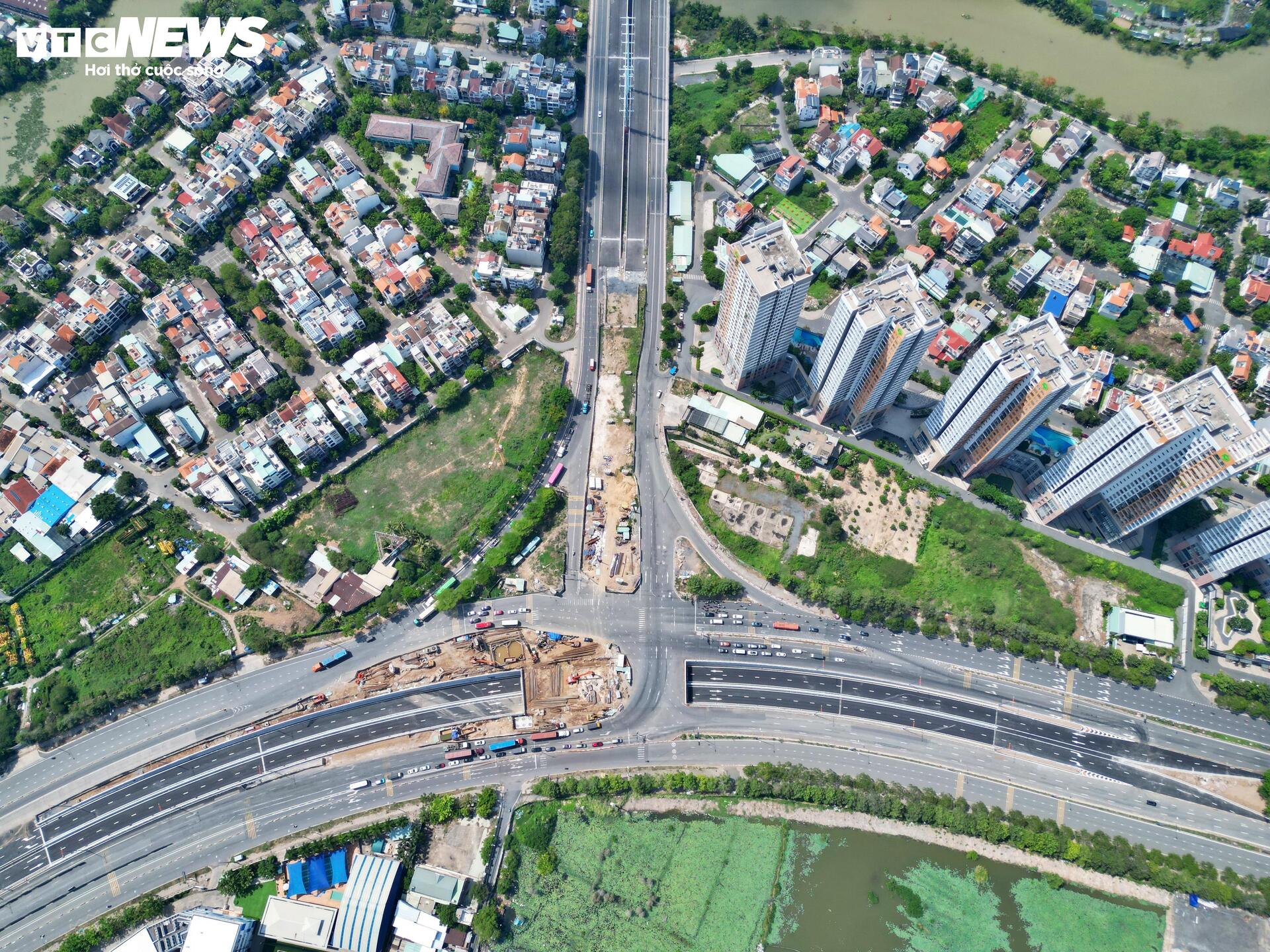
The An Phu intersection project, with a total investment of over VND 3,400 billion, encompasses three levels, including an underpass, ground level, and flyover. It is a pivotal transportation hub designed to alleviate congestion in Ho Chi Minh City’s eastern gateway, providing a direct connection between the Ho Chi Minh City – Long Thanh – Dau Giay Expressway and major roads such as Mai Chi Tho, Luong Dinh Cua, and Nguyen Thi Dinh.
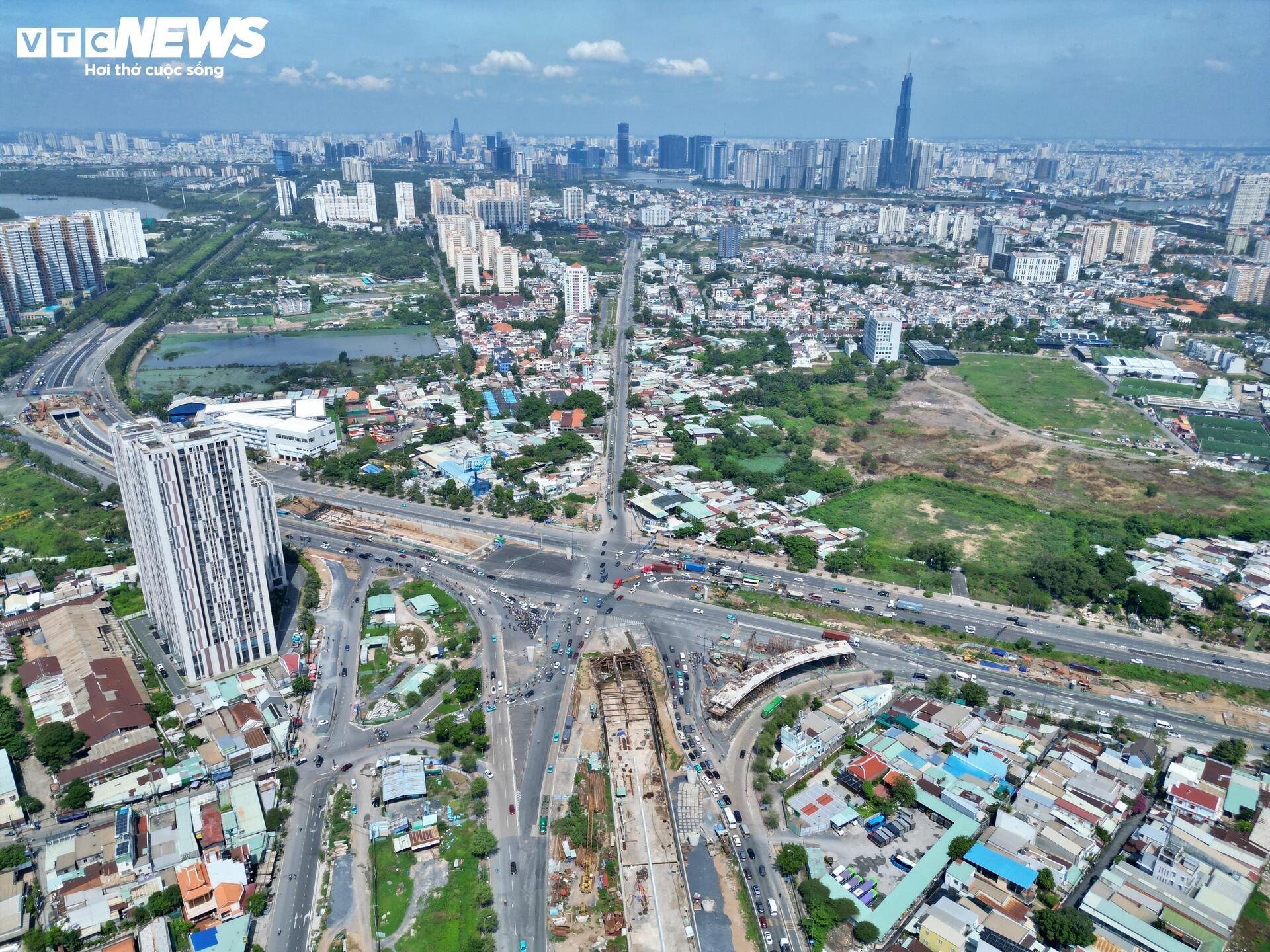
The An Phu intersection is hailed as Ho Chi Minh City’s most modern interchange. Upon completion, it will not only alleviate congestion in the city’s eastern gateway but also enhance the efficiency of the Ho Chi Minh City – Long Thanh – Dau Giay Expressway, especially with the future operation of the Long Thanh International Airport.
The Masterplan for a New Urban Area: Revitalizing Binh Quoi – Thanh Da, Ho Chi Minh City
The adjusted planning proposal for the new Binh Quoi – Thanh Da urban area project ensures alignment with the directional development of urban space as per the master plan of Ho Chi Minh City. This project is intricately tied to infrastructure requirements, long-term landscape preservation, and adaptation to climate change.
Unveiling Japan’s Quintessence: When Stories Transform into Models
On May 17th, Van Xuan Group officially inaugurated the Happy One Sora project’s operation house. The event also marked a moment of unveiling the essence with the “unboxing” of the project’s sand table. From a sketch, the story has now been “built” into a model, offering a more authentic experience of the future homes of Thu Duc City residents.
“BCM Chairman: Equity Fundraising Drive Can Be Extended to 2030 If Challenges Persist”
On May 15, Becamex IDC, a leading industrial investment and development corporation listed on the Ho Chi Minh Stock Exchange (HOSE: BCM), held its annual General Meeting of Shareholders. The company presented key agenda items for 2025, including its business plan, dividend distribution proposal, and the election of additional members to its Board of Directors.
The End of Short-Term Rental Businesses in Condos: A New Era for the Industry
“There are currently no specific legal regulations that define the exact number of days that constitute a ‘short-term rental,’ according to the Ministry of Construction. “

